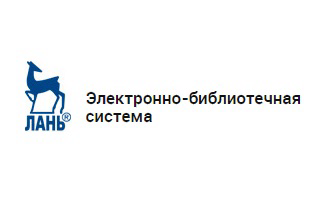| УДК 622.4+519.67 | DOI: 10.21440/0536-1028-2021-7-5-15 |
Research objective is to estimate the effect of bulk explosion location and the initial height of the dust and gas cloud on open-pit natural ventilation time and the level of air contamination of the upper edge of the open pit down the wind.
Methods of research. Computer modeling of aerodynamics and gaseous component transfer in the 2D geometry is carried out with the COMSOL software. To calculate the aerodynamic characteristics, the approximation of the incompressible fluid with the standard k–ε turbulence model was carried out. Gaseous component distribution was modeled using the numerical solution to the convection-diffusion equation of contaminant transfer. Numerical experiments under the fixed initial concentration of the gaseous component and the speed of the incoming wind flow have been carried out for three locations of bulk explosions and six values of the initial height (from 70 to 420 m with a step of 70 m) of the dust
and gas cloud.
Research results and analysis. Spatial distributions of the model’s aerodynamic characteristics and contaminants gaseous component when reaching the maximum permissible concentration in the modeled area have been obtained. The estimated time of the open-pit natural ventilation and the dynamics of the open-pit upper edge air contamination dynamics down the wind have been analyzed. The complex and diversified nature of open pit ventilation for various locations of bulk explosions has been recorded. The undulating character of contaminant loss has been predicted (with different heights of peaks) conditioned by the presence of vortex formation in the open pit.
Conclusion and scope of results. For the recirculation scheme of ventilation, the situations with the bulk explosion locations shifted to the windward edge of the open pit are the longest. It has been shown that the reduction in the dust and gas cloud lift does not always ensure the reduction in the contamination level at the upper edge of the open pit down the wind.
Keywords: open pit; bulk explosion; ventilation; lift; dust and gas cloud; contamination; numerical modeling.
REFERENCES
- Konorev M. M., Nesterenko G. F., Pavlov A. I. Ventilation and dust and gas suppression in the air of an open pit. Ekaterinburg: UB RAS Publishing; 2010. (In Russ.)
- Ushakov K. Z., Mikhailov V. A. The aerology of open pits. Moscow: Nedra Publishing; 1975. (In Russ.)
- Beresnevich P. V., Mikhailov V. A., Filatov S. S. The aerology of open pits. Moscow: Nedra Publishing; 1990. (In Russ.)
- Filatov S. S. Open pit ventilation. Moscow: Nedra Publishing; 1981. (In Russ.)
- Bitkolov N. Z., Medvedev I. I. The aerology of open pits. Moscow: Nedra Publishing; 1992. (In Russ.)
- Nikitin V. S., Bitkolov N. Z. Ventilation design in open pits. Moscow: Nedra Publishing; 1980. (In Russ.)
- Amosov P. V. The dominant factor in the “blasting–wind conditions” pair. Izvestiia SPbGTI(TU) = Bulletin of the Saint Petersburg State Institute of Technology (Technical University). 2020; 54(80): 93–98 (In Russ.). Available from: doi: 10.36807/1998-9849-2020-54-80-93-98
- Chugh Y. P., MdAzmi A. Z., Gurley H., Kollipara V. K., Hirschi J. CFD analysis of airflow distribution in high mining areas of room-and-pillar coal mining. Proceedings of the 37th International Symposium APCOM 2015, Fairbanks, Alaska. 2015. P. 911–920.
- Tutak M., Brodny J. Influence of auxiliary ventilation devices on a distribution of methane concentration at the crossing of longwall and ventilation roadway. International Multidisciplinary Scientific GeoConference SGEM. 2017; 17(13): 437–444.
- Nakariakov E. V., Semin M. A., Grishin E. L., Kolesov E. V. Analysis of the regularities of accumulation and removal of the exhaust gases from the сombustion-engined vehicles in the dead-end chamber-like mine workings. Bezopasnost truda v promyshlennosti = Occupational Safety in Industry. 2021; 5: 41–47 (In Russ.). Available from: doi: 10.24000/0409-2961-2021-5-41-47
- Iastrebova K. N. Improving the intensity of natural air exchange in the working areas of open pits based on the aerodynamic profiling of the leeward sides: PhD in Engineering thesis (In Russ.). Available from: http://xn----etbhhidsfiu1b6f.xn--p1ai/system/files/lib/sci/aspirant-doctorant/avtoreferaty/2015/2015-3/yastrebova_dissertaciya.pdf [Accessed: 24th June 2015].
- Gridina E. B., Andreev R. E. Mathematical modeling based on CFD method of wind currents in combined working out of the Olenegorsky pit in the Flowvision software package. International Review on Modelling and Simulations. 2017; 10(1): 62–69.
- Raj K. V. Three dimensional computational fluid dynamics models of pollutant transport in a deep open pit mine under Arctic air inversion and mitigation measures: PhD thesis. Available from: https://scholarworks.alaska.edu/handle/11122/5756 [Accessed: 17th October 2017].
- Bashirov N. R. Method for dynamic design of dumps in preliminary simulation of airflow. Izvestiya vysshikh uchebnykh zavedenii. Gornyi zhurnal = News of the Higher Institutions. Mining Journal. 2018; 2: 40–47. (In Russ.)
- Amosov P. V., Kozyrev S. A., Nazarchuk O. V. Creating computer model of atmosphere aerothermodinamics of open pit in Ansys Fluent. Izvestiia Sankt-Peterburgskogo gosudarstvennogo tekhnologicheskogo instituta = Bulletin of the Saint Petersburg State Institute of Technology (Technical University). 2018; 44(70): 121–125. (In Russ.)
- Integrated environment of the numerical modelling COMSOL (In Russ.). Available from: https://www.comsol.ru [Accessed: 14 December 2019].
- Egorov V. I. Using a computer to solve the problem of thermal conductivity. St. Petersburg: SPb GU ITMO Publishing; 2006. (In Russ.)
- Biutner E. K. The dynamics of the nearsurface air layer. Leningrad: Gidrometeoizdat Publishing; 1978. (In Russ.)
- Kollman V. (ed.) The method of turbulent flows calculation. Moscow: Mir Publishing; 1984. (In Russ.)
- Snegirev A. Iu. High performance computing in the applied physics. Numerical modelling of turbulent flows. St. Petersburg: Politekhn. un-t Publishing; 2009. (In Russ.)
- Garbaruk A. V., Strelets M. Kh., Shur M. L. Modelling turbulence in complex flows computing. St. Petersburg: Politekhn. un-t Publishing; 2012. (In Russ.)
- Kozyrev S. A., Amosov P. V. Modeling of removal of harmful substances during airing deep openpits through ventilation mine excavations. Gornyi informatsionno-analiticheskii biulleten (nauchnotekhnicheskii zhurnal) = Mining Informational and Analytical Bulletin (scientific and technical journal). 2015; S56: 390–398. (In Russ.)
- Mislibaev I. T., Zairov Sh. Sh., Tukhtashev A. B., Normatova M. Zh. Reduction in dust and gas pollution of the atmosphere under the production of bulk explosions at open pits. Izvestiya vysshikh uchebnykh zavedenii. Gornyi zhurnal = News of the Higher Institutions. Mining Journal. 2017; 2: 39–43. (In Russ.)
- Marchuk G. I. Mathematical modeling in the environmental issue. Moscow: Nauka Publishing; 1982. (In Russ.)
- Penenko V. V., Aloian A. E. Models and methods for the environmental protection tasks. Novosibirsk: Nauka Publishing; 1985. (In Russ.)
- Baklanov A. A. Numerical modeling in the mining earology. Apatity: KB AS URRS Publishing; 1987. (In Russ.)
- Baklanov A. Application of CFD methods for modeling in air pollution problems: possibilities and gaps. Environmental Monitoring and Assessment. 2000; 65(1–2): 181–189. Available from: doi: 10.1023/A:1006442514766









